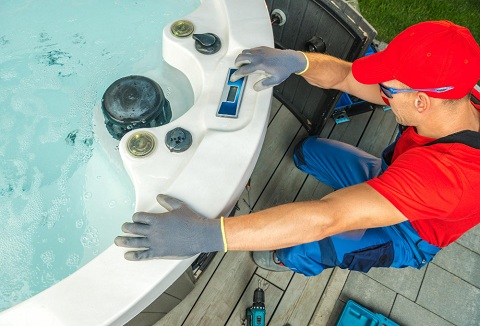Maintaining a pool pump is essential for ensuring the longevity and cleanliness of your pool. One common issue pool owners face is the presence of air bubbles in the suction basket. Understanding what causes these bubbles and how to address them can save time, money, and hassle. In this comprehensive guide, we delve into the various causes of air bubbles in the suction basket and provide detailed solutions to tackle each issue effectively.
Understanding the Role of the Suction Basket
The suction basket, also known as the strainer basket, is a critical component of the pool’s circulation system. It catches debris before the water reaches the pump, preventing clogs and ensuring smooth operation. When air enters this system, it can create bubbles, leading to inefficiencies and potential damage to the pump.
Common Causes of Air Bubbles in the Suction Basket

1. Low Water Level in the Pool
One of the most straightforward causes of air bubbles in the suction basket is a low water level. When the water level falls below the skimmer intake, air is drawn into the system along with the water.
Solution:
Ensure that the pool’s water level is maintained at the optimal height, typically halfway up the skimmer opening. Regularly check and refill the pool as needed, especially during hot weather when evaporation rates are high.
2. Air Leaks in the Suction Line
Air leaks in the suction line are a common culprit behind air bubbles. These leaks can occur at various points, including the pump lid, O-rings, and pipe fittings.
Solution:
- Pump Lid and O-Rings: Check the pump lid for cracks and ensure the O-ring is intact and well-lubricated. Replace the O-ring if it shows signs of wear or damage.
- Pipe Fittings: Inspect the pipe fittings for any visible cracks or loose connections. Use a silicone-based sealant to fix minor leaks or replace damaged parts as necessary.
3. Loose Pump Lid
A loose pump lid can also allow air to enter the system. Even a slightly loose lid can break the vacuum seal, leading to the introduction of air.
Solution:
Ensure the pump lid is tightly secured. If the lid is difficult to tighten, check for debris or damage to the threads and clean or replace as needed.
4. Clogged Skimmer Basket
A clogged skimmer basket can restrict water flow, causing the pump to work harder and potentially drawing air into the system.
Solution:
Regularly clean the skimmer basket to ensure it is free of debris. This simple maintenance task can prevent many issues related to air bubbles and improve overall pump performance.
5. Faulty Valves
Valves that control the flow of water to and from the pump can develop leaks over time. Worn-out or faulty valves may allow air to seep into the system.
Solution:
Inspect the valves for signs of wear and tear. Replace any valves that appear to be damaged or are no longer functioning properly. Regular maintenance of valves can prevent air leaks and ensure efficient operation.
6. Cracked Pump Housing
The pump housing itself can develop cracks due to age, exposure to the elements, or physical damage. These cracks can be a source of air leaks.
Solution:
Carefully inspect the pump housing for cracks. Small cracks may be repaired with epoxy, but larger cracks typically require the replacement of the pump housing.
7. Issues with the Suction-Side Pool Cleaner
If you use a suction-side pool cleaner, it could be introducing air into the system if not functioning correctly.
Solution:
Check the hose and connections of the pool cleaner for leaks. Ensure the cleaner is operating efficiently and not drawing in air through any damaged parts.
Detailed Steps for Diagnosing Air Leaks

Identifying the source of an air leak can sometimes be challenging. Here’s a step-by-step approach to diagnose and fix air leaks in your pool system:
- Visual Inspection: Start by visually inspecting all components, including the pump lid, O-rings, valves, and pipe fittings.
- Water Test: Turn off the pump and pour water over suspected leak points. If bubbles form or you notice water being drawn in, you’ve likely found the leak.
- Soap Solution Test: Apply a soapy water solution to the connections and watch for bubbling, which indicates escaping air.
- Pressure Test: Use a pressure testing device to check for leaks in the suction line.
By systematically following these steps, you can accurately pinpoint and address the source of air leaks.
Preventive Maintenance Tips
Preventive maintenance is key to avoiding air bubbles in the suction basket and ensuring the longevity of your pool pump. Here are some essential tips:
- Regular Inspections: Conduct routine inspections of the pump, suction lines, and all related components.
- Lubricate O-Rings: Regularly lubricate the pump lid O-ring and other seals to maintain a tight seal.
- Clean Filters and Baskets: Keep the skimmer and pump baskets clean and free of debris.
- Check Water Levels: Maintain the pool water at the recommended level to prevent air from entering the system.
- Schedule Professional Service: Periodically have a professional pool technician inspect and service your pool system.
Conclusion
Addressing air bubbles in the suction basket is crucial for the optimal performance of your pool pump. By understanding the common causes and implementing the solutions provided, you can ensure a smooth and efficient pool operation. Regular maintenance and timely repairs will not only extend the life of your pool pump but also enhance your swimming experience.

